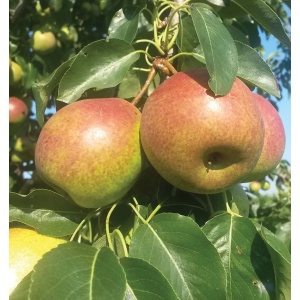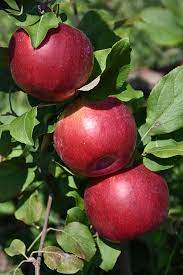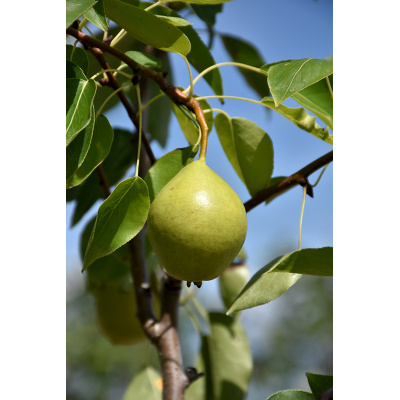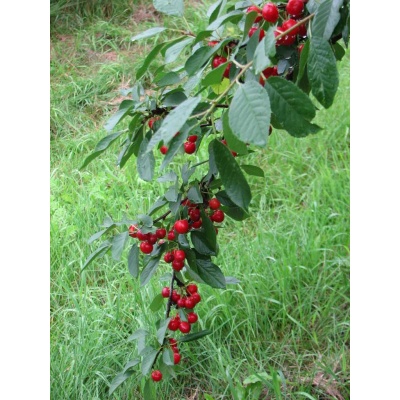Description
 Pyrus sp. ‘Summercrisp’
Pyrus sp. ‘Summercrisp’
Summercrisp Pear
Summercrisp pear was released by the University of Minnesota in the 1980’s. It is a very cold hardy variety that is a prolific producer of small, crispy pears (3″-3.5″ fruits) that are good for fresh eating only. A unique pear as it is best picked and consumed at the green/ripe stage when the fruit is crispy and not fully ripe. The fruit quality decreases rapidly if allowed to fully ripen. Stores for up to 3 weeks refrigerated.
Characteristics
USDA Hardiness Zone: to zone 4
Mature Height: 15 feet
Mature Spread: 12 feet
Growth Rate: Slow
Growth Form: Upright tree
Light Requirements: Full Sun
Site Requirements: Well-drained site
Flower: White
Bloom Period: Early May
Foliage: Green
Fall Color: N/A
Urban Approved: Yes
Fruit Notes: The green/yellow fruit ripens around August 10-15th in S.E. WI. Often develops a red blush on the sunny side of the fruit.




Reviews
There are no reviews yet.